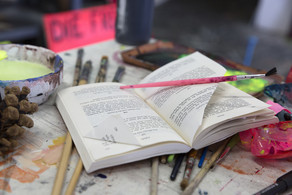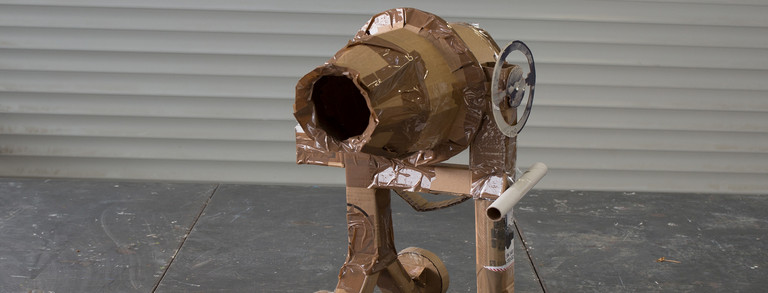Plastic
Sculpture
The artistic field of sculpture: three-dimensionally shaped and graspable things and man-made space determine our living environment. Artistic three-dimensional design is a primordial text that goes back many thousands of years and to which all applied plastic-material and spatial design practice can be traced.
Artistic action is the most complex form of human description and shaping of the world. Contemporary art practice is based on a concept of art that has been expanded to the extreme. Of course, the artistic field of sculpture is also based on this, which, together with the other artistic genres, is to be considered multidisciplinary throughout and links theory with practice.
The artistic field of sculpture functions as the most comprehensive, intellectually and sensually elaborate, spatially connoted playground of levels of perception, cognitive mapping, settings and probabilities. As an open, decidedly experimental space of possibility, sculpture deals with everything that surrounds and shapes us as human beings, especially what is material-formative, three-dimensional, spatial and material.
Sculpture means: working with all materials, with all tools, analogue and digital, working in all places, working with boundaries and boundlessness, experimental research and playing with space and body, two-dimensionality, three-dimensionality, four-dimensionality, etc. Complexity and contradiction; exploring complexity and contradiction.
Complexity and contradiction; exploring line, surface, space, measure, human, city; dealing critically with phenomenologies of everyday life, with the conditions of human life, with utopias and probabilities; power and powerlessness of ideas; making decisions and learning the ability to criticize
Artistic teaching in the subject of sculpture: The aims of teaching in the subject of sculpture are to develop and impart specific artistic knowledge and skills that enable students to understand, practise and reflect on three-dimensional artistic work in accordance with the breadth of contemporary artistic practice and in the context of subject-specific theory formation and global issues of current artistic and social discourses.
Teaching in the subject of sculpture conveys the fundamentals of craftsmanship and practices and also opens up discursive spaces against the background of an expanded concept of art. This includes working in and with interior and exterior spaces and the greatest possible practical knowledge of the use of all kinds of materials. Students should be able to develop and communicate their own artistic positions. They should be able to realize an artistic idea both sketchily-quickly and technically and materially with high precision. The development and implementation of work shows and project presentations in informal or institutional space as well as the analogue and digital documentation of one's own work are also part of the teaching in the subject of sculpture.
Prof. Martin Kaltwasser (1965-2022), TU Dortmund University
As of October 15, 2024 Nikola Ukic was professor for sculpture.
Sculpture has its own e-mail address plastik.fk16tu-dortmundde for enquiries of all kinds.
For further details, please refer to the German version of this page, as not all content is available in English.




